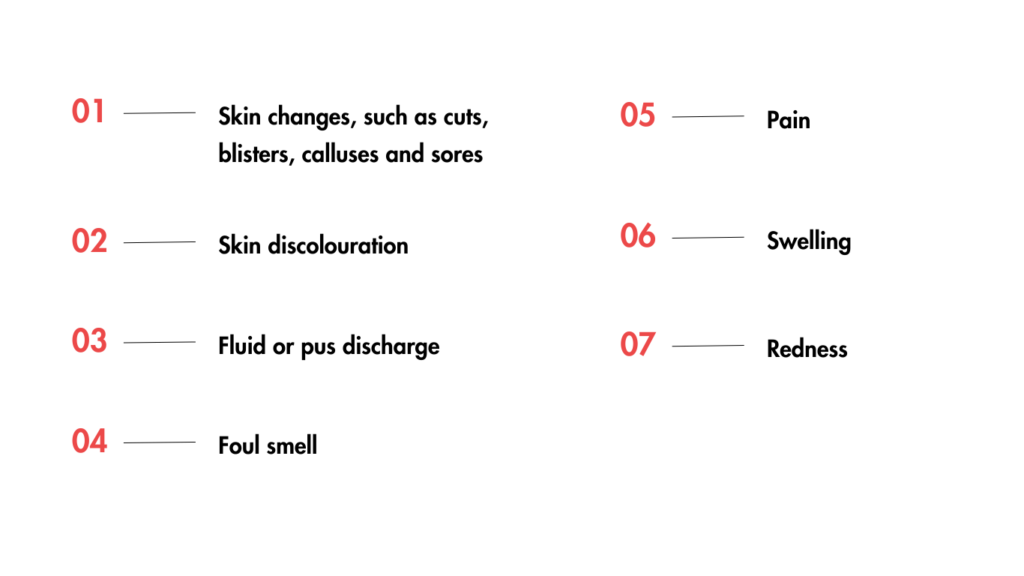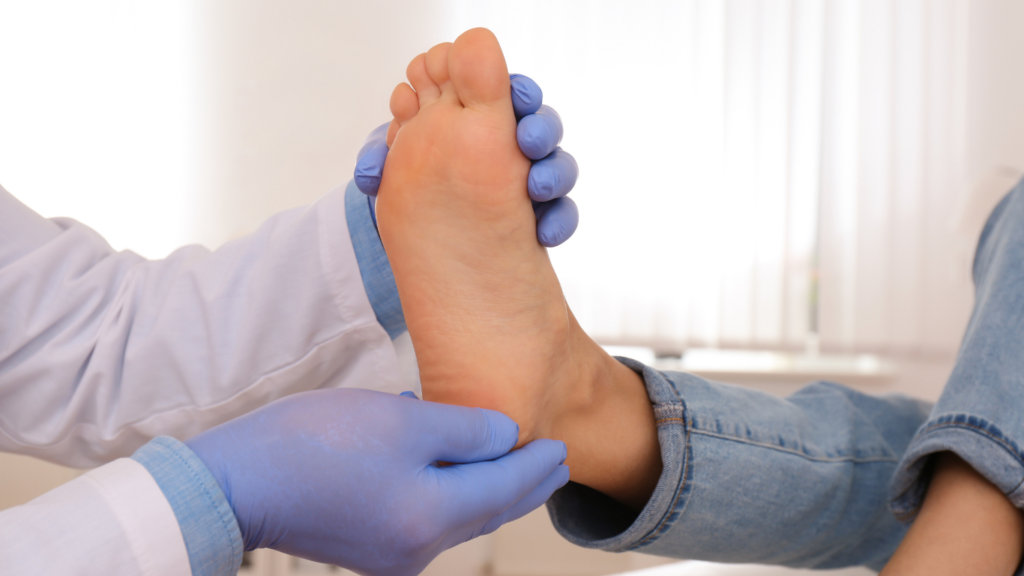1 in 3 Singaporeans is at risk of developing diabetes in their lifetime, increasing their risk of other complications. One of the most common health risks of diabetes is damaged nerves, causing foot problems that may lead to lower limb amputation if left unmanaged.
Dr Tang, our senior vascular and endovascular surgeon, believes a lack of awareness of the severity of diabetic complications results in patients seeking late medical care. To combat the rising tide of diabetes-related foot complications, medical surgeries such as keyhole procedures for diabetes have emerged as a promising solution. Learn more in this article.
What Are Toe Ulcers and Gangrene
Foot or toe ulcers are open sores commonly located on the bottom foot due to a blocked artery in the leg, preventing oxygen from reaching the wound to facilitate the healing process of the ulcer. It often occurs in individuals with diabetes due to high blood sugar levels compromising the circulatory system and impairing nerve function. Gangrene, on the other hand, arises when cells in the affected area die due to a lack of blood supply, leading to the decay of the surrounding tissue.
Signs and Symptoms

Who Is More Likely to Struggle With Diabetic Foot Problems
Diabetic foot problems affect individuals with certain risk factors and conditions, heightening their risk of encountering these challenges. It includes the duration of diabetes due to the cumulative effects of high blood sugar levels over long periods. This leads to nerve damage and vascular complications, contributing to the onset of ulcers and related problems.
Individuals with the following risk factors may also have an increased risk of diabetic foot problems.





How Our Vascular Specialist Addresses Diabetic Foot Problems
Keyhole surgery for skin conditions from diabetes is a transformative option to facilitate optimal healing and minimise damage to surrounding tissues.
In his practice, Dr Tang utilises a range of minimally invasive interventions for skin conditions related to diabetic foot problems. These procedures use technologies and techniques to tackle poor circulation, nerve damage, and ulcers.
For instance, a recent patient of Dr Tang, Mr Victor Susainathan, suffered from a slow-healing wound on his right toe due to restricted blood flow in his right leg. Recognising the emergent nature of the situation, Dr Tang immediately recommended a lower limb revascularisation using balloon angioplasty.
This involves a 0.2 cm incision in the groin artery to insert a tiny balloon to widen narrow arteries and improve blood circulation in the right leg. It provides a quick post-operative recovery, as observed with Mr Victor, who could walk the following day after the procedure.
At the vascular and endovascular clinic, we aim to provide patients with optimal solutions tailored to their needs. As a result, Dr Tang continues to innovate medical interventions for diabetic foot problems. This includes using balloons coated with stimulants to prevent blood vessels from re-narrowing.
Additional Services for Diabetic Foot Conditions at the VE Clinic
Our clinic offers services to enhance the care for diabetic foot conditions.
- Diabetic foot screening
- Advanced foot wound care dressings
- Vacuum-assisted closure (VAC) or negative pressure therapy
- Topical oxygen therapy (Natrox™)
- Neuro-stimulation therapy (Geko™)
- Blue Light Therapy (EMOLED)
- Split skin grafting
These interventions improve the results of minimally invasive interventions for skin conditions related to diabetes, boosting blood supply and healing potential to the affected area.
Consult with our senior vascular surgeons, Dr Tang and Dr Wong, to receive a precise treatment plan tailored to your specific needs today.
When To Consider Keyhole Procedures for Diabetes

Patients with diabetes struggling with persistent foot ulcers, slow wound healing, or complications related to peripheral artery disease (PAD) should consult our vascular specialist to determine whether keyhole procedures as a diabetic treatment option are suitable. Early consideration prevents deterioration and promotes quicker recovery.
Advantages of Minimally Invasive Procedures
Keyhole or minimally invasive procedures offer advantages under specific circumstances. For instance, keyhole procedures involve smaller incisions, resulting in less trauma to surrounding tissues. This reduces pain and a lower risk of infection, allowing a short recovery period.
In addition, keyhole procedures utilise imaging technologies to give surgeons a real-time view of the affected area, enhancing their ability to address intricate issues. This precision minimises the risk of complications and optimises the outcomes where critical structures like blood vessels and nerves are involved.
Your Journey to Optimal Diabetic Foot Wellness: Toe Ulcer Care at the Vascular and Endovascular Clinic
Diabetic foot problems due to impaired circulation and damaged nerves may cause toe ulcers and gangrene, leading to amputation and diminished quality of life.
At the Vascular and Endovascular Clinic, we understand the gravity of diabetic foot problems and the transformative effect that early interventions wield. As a result, we provide keyhole surgery for skin conditions arising from diabetes as an effective intervention against these complications.
Our commitment extends beyond medical procedures. Our senior vascular specialists, Dr Tang and Dr Wong, are dedicated to equipping patients with the necessary medical knowledge, empowering them to make informed and suitable health decisions. By offering evidence-based treatments and interventions, patients are not only able to manage their conditions effectively but also allow them to embrace a healthier lifestyle despite the challenges of diabetes.









